Results 3,741 to 3,750 of 12096
Thread: Anandtech News
-
03-19-14, 11:33 AM #3741
Anandtech: ASRock FM2A88X Extreme6+ Review
For the AMD Kaveri launch, a number of review publications received the FM2A88X Extreme6+ from ASRock. This is a motherboard that was released several months before the Kaveri processors hit the market, but adhered to specifications for both Richland and Kaveri APUs. Today we are reviewing this motherboard, which threw up a surprise or two.
More...
-
03-19-14, 04:30 PM #3742
Anandtech: AMD Teases Dual-GPU Video Card Once Again
Following last week’s dual-GPU teaser, AMD’s marketing department is back with another teaser for their forthcoming product.
This time they’ve sent along a bottle of water and two cans of (potato) chips. All 3 items are adorned with the “#2betterthan1” hash tag.
The chips themselves are unremarkable (Pringles). Meanwhile the bottle of water is far more interesting.
Rather than just being typical water, the Waiakea “Hawaiian Volcanic Water.” The use of Hawaiian water no doubt intentional and strongly hinting at the card being based on AMD’s Hawaii GPU.
Finally, keeping with AMD’s “top secret” theme for this campaign, they sent along a letter with a bit more information. We’ve posted a redacted version below.
We also quickly checked the text for the logo at the top, “Melius est ergo duos esse simul quam” which as it turns out is taken from Ecclesiastes 4:9 in the Bible. The English translation of this (NIV) is "Two are better than one” once again continuing AMD's teaser theme.
More...
-
03-19-14, 07:00 PM #3743
Anandtech: GDC 2014: NVIDIA, AMD Announce New Game Dev Partnerships - Crytek, Epic, &
With GDC 2014 taking place this week in San Francisco, there are a number of gaming related announcements occurring over the next couple of days. These announcements in turn frequently intersect hardware announcements and relationships, as both NVIDIA and AMD have made it a priority to form partnerships with various game development houses to promote their various technologies and to have them implemented into high visibility games.
To that end both NVIDIA and AMD are announcing new game development partnerships, which we’ll be briefly covering.
NVIDIA
NVIDIA is at GDC 2014 showing off their GameWorks effects libraries. GameWorks is a reorganization of NVIDIA’s existing effects libraries, bringing them together under the umbrella of the singular GameWorks initiative. GameWorks includes NVIDIA’s PhysX and OptiX (ray tracing) libraries, along with their VisualFX suite of libraries including FaceWorks, WaveWorks, and Turbulence.
First up, NVIDIA has announced that Crytek will be adopting GameWorks for their free-to-play online FPS Warface. Warface will be integrating Turbulence and PhysX for improved debris and particle simulations. These enhancements will be released in a future patch.
Epic is also partnering with NVIDIA to integrate GameWorks into Unreal Engine 4. The various GameWorks libraries are being integrated into the mainline Unreal Engine 4 codebase, making them directly available to UE4 developers rather than requiring individual developers to bolt them on after the fact. Given Unreal Engine’s heavy use as middleware in game development, having GameWorks available to all of the UE4 licensees is a significant step up for NVIDIA, as it exposes GameWorks to a large number of developers with just a single partnership.
Update: In a late-in-the-day announcement, NVIDIA has announced that they’re also partnering with Respawn Entertainment, the developers of Titanfall. Titanfall with be receiving NVIDIA technology enhancements, specifically support for TXAA anti-aliasing (something we haven’t seen much news of lately) and HBAO+ ambient occlusion. Like Warface, these features will be patched in at a later date. Furthermore, NVIDIA also mentions that future Titanfall updates will include support for 4K resolution displays and SLI; though the nature of this announcement makes it sound like it’s generic functionality that won't be NVIDIA-exclusive.
AMD
First and foremost, AMD has announced that they are partnering with Crytek (everybody loves Crytek, it seems) to bring Mantle support to CRYENGINE. After spending the past few years attempting to license out CRYENGINE Crytek is finally having some success there, so as with AMD’s previous efforts to get Mantle into Frostbite this is another important middleware partnership for AMD. For AMD’s ISV relations efforts, this means that licensees will now have access to Mantle through CRYENGINE rather than having to undertake the more difficult task of adding it themselves.
Next up, AMD is also working with Rebellion Developments to get Mantle support in Sniper Elite III. AMD has previously worked with Rebellion on their earlier Sniper Elite titles to add Eyefinity support, SSAA, and other graphical features, so this is an expected extension of that partnership.
Square Enix is also partnering with AMD for their forthcoming game Murdered: Soul Suspect. Murdered will be integrating a number of unspecified Direct3D 11 effects. Like Rebellion Developments, Square Enix is a regular AMD partner, having worked with AMD on past titles such as Tomb Raider.
Finally, AMD and developer Xaviant have confirmed that Lichdom will be integrating support for AMD’s TrueAudio technology and their TressFX Hair technology. Lichdom was already being used to demonstrate TrueAudio back at AMD’s Hawaii press event, so this is largely a confirmation that the final game will include the technology. TressFX ont he other hand is a more recent addition.
More...
-
03-19-14, 07:31 PM #3744
Anandtech: Intel 2014 Enthusiast Processors: New Unlocked Iris Pro CPU Coming to Broa
In a somewhat uncharacteristic turn from Intel, we were hooked up and loaded in to a press conference call this week regarding the announcement of some exciting new products coming to market. The purpose of the press conference call was to explain some new technologies coming to the scene, as well as Intel stating that they are listening to their userbase, including enthusiasts. As an enthusiast, these announcements make me very excited, although they do produce more questions than they answer.
The announcement is the introduction of a socketed version of Iris Pro, coming to Intel’s Broadwell platform.
So the first big thing here is Iris Pro coming to a socketed platform, which we have requested since the release of Crystal Well BGA parts in devices like the Apple iMac and GIGABYTE BRIX Pro. This should allow users to build SFF socketed systems with Intel’s highest end integrated graphics. What was not mentioned was if this will be a new Iris Pro for Broadwell, or just another Iris Pro HD 5200 part with a Broadwell CPU.
The second big part from this one announcement is that the CPU is said to come fully unlocked. This should mean that the CPU multiplier, CPU strap, memory and the uncore should be fully adjustable - Intel have told us that this part will have a similar set of overclocking tools as the other unlocked parts. Intel are not disclosing what the limits are or what is expected, and equally no information regarding the release date, whether this CPU will come with the Broadwell CPU launch or at a later date afterwards.
More...
-
03-19-14, 07:31 PM #3745
Anandtech: Intel 2014 Enthusiast Processors: Haswell-E To Feature 8 Cores, X99, DDR4
The second of Intel’s enthusiast-based announcements after the unlocked Iris Pro coming to Broadwell is one regarding Intel’s new high performance platform. Currently we sit with socket LGA 2011 featuring Sandy Bridge-E and Ivy Bridge-E CPUs on top of the X79 chipset using DDR3 memory. Intel are confirming today that the next stage in that process will be Haswell-E, supported by the new X99 chipset and flanked with DDR4 memory.
The new processor line up will have an 8-core CPU at the top end, which Intel is calling their first ‘8-core desktop processor’ (strictly speaking Avoton is a server part). Given that the Xeon line of Ivy Bridge-E CPUs can hit 10, 12 and 15-core counts as we have reviewed, it should have been possible for Intel to consider these core counts for the enthusiast platform. However Intel has no competition in this area to innovate, so while core counts may rise on the Xeon side of the equation, for the consumer line we will have to wait longer for anything more than 8 cores.
The shift to DDR4 memory has been expected for a number of quarters. Speculation initially revolved around DDR4 coming earlier than Haswell-E, but we have to consider the enterprise market on this one. As many Ivy Bridge-E users have lamented, staying with the X79 platform has put consumers on the back foot when it comes to connectivity compared to the 8-series platform. X79 is down on USB 3.0 ports, SATA 6 Gbps ports and no mention of Flex-IO. So with X99 and DDR4, given that we expect to keep this platform for at least Haswell-E and Broadwell-E (potentially 2.5 to 3 years), it comes in now in preparation for the future platforms. We have seen DDR4 modules being tested at various trade shows, and I would imagine that most of the major memory partners (especially the enthusiast lines) are currently preparing kits.
The X99 platform is almost a complete unknown at this point. Given that Intel state that Haswell-E is planned for 2H 2014, we have had no information. In order to remain as the top end platform in the chipset sense (and not fall behind like X79), I would imagine X99 to take many cues from Z87 and even from the 9-series motherboards we have seen at CeBIT. This should mean a full complement of SATA 6 Gbps ports and USB 3.0 ports, with support for M.2, although we have no confirmation. Similarly while I would expect Flex IO to be present, allowing manufacturers to vary the number of PCIe 2.0 lanes from the chipset in exchange for SATA 6 Gbps ports and USB 3.0 ports, we also have no confirmation. In the past there have been X79 products with SAS support, although these were extra parts of the chipset that were not part of the validation process. It would be interesting to see if any of that functionality makes its way in. Flex IO seems like the future of flexible chipset design, and it would be interesting to see if Intel thinks this way as well.
As mentioned, and in the slide, Haswell-E is due in the second half of 2014. We unfortunately have no extra information on that date, but it confirms 2014 rather than 2015 which had been speculated.
More...
-
03-20-14, 09:00 AM #3746
Anandtech: Intel System Giveaway Part 4: High End Core i7 Performance System
Late last year Intel came to us with an interesting proposition: using Haswell CPUs and Intel SSDs, we had to come up with four of our best system builds. Each build would be targeted at a slightly different type of user and budget, but all are aimed at folks looking to overclock. With the component list assembled, Intel went out, got all of the parts we selected and agreed to give away the bundles to AnandTech readers.
Today's giveaway is the last full system we've got, and it's easily the best one we've done. These systems are purely parts bundles, you'll have to assemble them yourself. Literally everything here was picked by Jarred and Ian as what they'd build if given these budgets.
More...
-
03-20-14, 03:00 PM #3747
Anandtech: Dell XPS 15 QHD+: Revisiting the LCD Results
When I posted the review of the Dell XPS 15 last week, the display was one of the highlights, though not without problems. The biggest issue of course is dealing with the large number of Windows apps that don’t support the high DPI API; there’s not much to be done there other than to wait and let the application developers work things out – and they will, considering the number of high DPI displays coming down the pipe! The other issue was that the out-of-box colors weren’t all that great (oversaturated), and even after calibration there were still a few small quirks with the colors. Well, we received word from one of our readers that the problem with the colors can at least be partially fixed by disabling the “Splendid color" mode, so I set about retesting the display.
First things first, if you have this particular laptop and are wondering where Splendid mode is set, you have to go into the Windows Mobility Center. You can see the “Enhanced color performance” setting in the above images, which of course look the same on your display as the setting only changes my LCD’s LUTs (Look Up Tables) but trust me: they're not the same. Apparently Dell sets Splendid color mode initially, and unless you specifically go looking for the setting you’ll likely miss it – as I did. Here’s where things get a bit odd….
My initial results after calibration were quite good, even with the display being set to Splendid mode. Now I can’t reproduce those numbers. What I can reproduce is similar numbers with the display set to “Generic color” (within the Windows Mobility Center settings), but they’re actually better than before. As this is the first display I’ve tested with the new software/hardware, I’m still learning a few things, but if you have an XPS 15 with the QHD+ display and you can’t get the colors to look right, hopefully enabling the “Generic color” setting will help you out.
So how does the XPS 15 QHD+ panel perform with the Generic color profile compared to the Splendid profile? Here are the uncalibrated/calibrated results and charts from both modes, separated into four galleries.
Gallery: Dell XPS 15 - Uncalibrated Splendid Mode





Gallery: Dell XPS 15 - Uncalibrated Generic Colors





As expected, the uncalibrated color accuracy on the Splendid mode is quite a bit worse than that of the generic color profile – Splendid clearly oversaturates certain colors. However, the main difference is that Splendid apparently kills the red levels where the other blue and green components are in some cases slightly better than the Generic profile. Overall, though, Splendid definitely isn’t what I would choose for proper colors. In general, the default colors in either mode aren’t that great, which is why we’d really like Dell (and others with these high-end panels) to factory calibrate. Let’s move on to the calibrated colors, though….
Gallery: Dell XPS 15 - Calibrated Splendid Mode





Gallery: Dell XPS 15 - Calibrated Generic Colors





And there’s what we were hoping for. The calibrated colors on the XPS 15 QHD+ panel were good before, but now they’re nearly perfect. What’s more, by going back to the calibration I have consistently been unable to recreate the earlier calibrated Splendid results. My best guess is that perhaps the unit I’m testing this on somehow had the Splendid profile modified so that it was more like the Generic mode, but after a full DCC reset I get the above results. And what they show is that even with calibration, I’m unable to fully correct the problems with oversaturated reds, and that throws some of the other colors off as well. Here's a quick summary of the average Delta E for the grayscale and Colorchecker charts.
Long story short, then: if you want better colors on the Dell XPS 15, use the Generic color profile. Pre-calibration it’s at least better than average, and post-calibration all of the tested points are below 2.0 dE, with the average being below 1.0 – essentially perfect. If Dell – or someone else – can deliver a laptop with that sort of color accuracy out of the box, we’d definitely be talking about Editors’ Choice material – for the display if not for the laptop as a whole. For imaging professionals, the combination of a high DPI PPS (like IPS) panel (e.g. “future proof”) that calibrates to nearly perfect colors is the best we have ever tested. Worst-case, you can run the panel at 1080p with 100% scaling and wait for the apps to properly support high DPI; best case, you could run QHD+ resolution and have even more screen real estate to work on editing videos, photos, etc.
More...
-
03-21-14, 01:30 PM #3748
Anandtech: PowerColor Radeon R7 250 - AMD Center Giveaway
The month of Radeon R7 250 giveaways continues! Last week we chose three winners for a stack of MSI Radeon R7 250s, and this week AMD is giving us three more - this time courtesy of PowerColor - to give away.
Lately there's been a lot of excitement around value video cards. Part of it is due to the simple fact that for low resolution gaming, you can generally approximate the experience of a modern game console with fairly low end hardware.
Late last year AMD announced its Radeon R7 250, an Oland based part priced at $89 for the value discrete market. The R7 250 also serves as an interesting Dual Graphics/CrossFire option for Kaveri users looking to increase the performance of their processor graphics.
AMD wants to give a bunch of these R7 250s away to users who can really use them. This week we're giving away three Radeon R7 250s from MSI to three lucky readers.
Here's the deal. To enter, simply post a comment below (US residents only, please only make a single post, contest requirements below) explaining your current PC setup and why you want, or need to win a Radeon R7 250. What I'm looking for here is an understanding of what your current system configuration is, why the Radeon R7 250 matters you and how you'd use it. Make your entries good as they may come in handy for some other stuff we've got planned in the future. If your entry from last time still applies, feel free to re-use it.
If you win, AMD wants your feedback on the GPU after you get it. You'll be asked to provide a short review (a paragraph or two, or video if you'd like) talking about your experience with the card. Do a good job and your feedback may even be featured on AnandTech.
AMD Radeon R7 250 Specifications AMD Radeon R7 250 Stream Processors 384 Texture Units 24 ROPs 8 Core Clock 1000MHz Boost Clock 1050MHz Memory Clock 4.6GHz GDDR5 Memory Bus Width 128-bit VRAM 1GB FP64 1/16 TrueAudio N Transistor Count N/A Typical Board Power 65W Manufacturing Process TSMC 28nm Architecture GCN 1.0 GPU Oland Launch Date 10/11/13 Launch Price $89
More...
-
03-22-14, 09:00 PM #3749
Anandtech: Samsung Galaxy Tab Pro 8.4 and 10.1 Review
Samsung Galaxy series of tablets and smartphones have been well received since they first started appearing on store shelves, and with good reason. Not all manufacturers really get industrial design, aesthetics, and the goal of building a cohesive whole that doesn’t cut corners. With the latest Pro series of tablets, Samsung looks to improve on their existing devices, with better performance, some minor tuning of the industrial design, and some software tweaks as well. We have the 8.4” and 10.1” Galaxy Tab Pro models in house and we’ve been testing them for the past week. Read on for our full review.
More...
-
03-24-14, 07:30 AM #3750
Anandtech: Microsoft Announces DirectX 12: Low Level Graphics Programming Comes To Di
With GDC 2014 having drawn to a close, we have finally seen what is easily the most exciting piece of news for PC gamers. As previously teased by Microsoft, Microsoft took to the stage last week to announce the next iteration of DirectX: DirectX 12. And as hinted at by the session description, Microsoft’s session was all about bringing low level graphics programming to Direct3D.
As is often the case for these early announcements Microsoft has been careful on releasing too many technical details at once. But from their presentation and the smaller press releases put together by their GPU partners, we’ve been given our first glimpse at Microsoft’s plans for low level programming in Direct3D.
More...
Thread Information
Users Browsing this Thread
There are currently 38 users browsing this thread. (0 members and 38 guests)





 Quote
Quote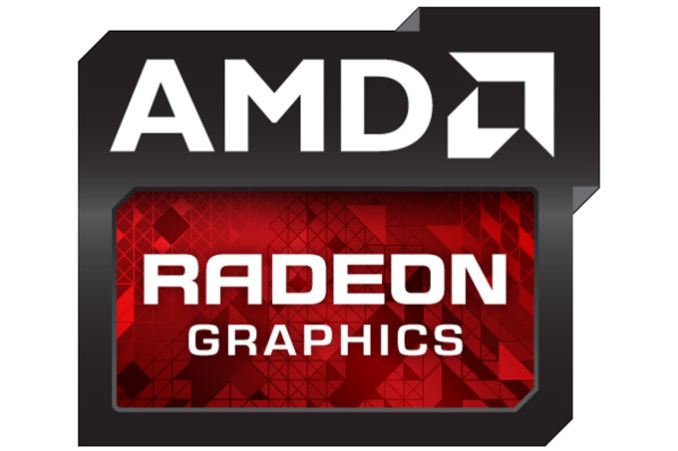





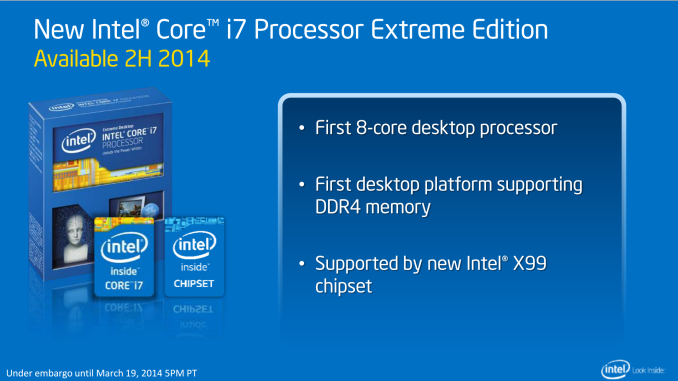
_575px.JPG)
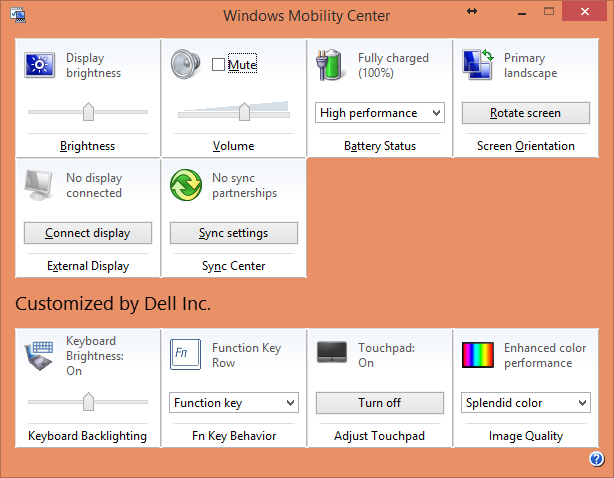
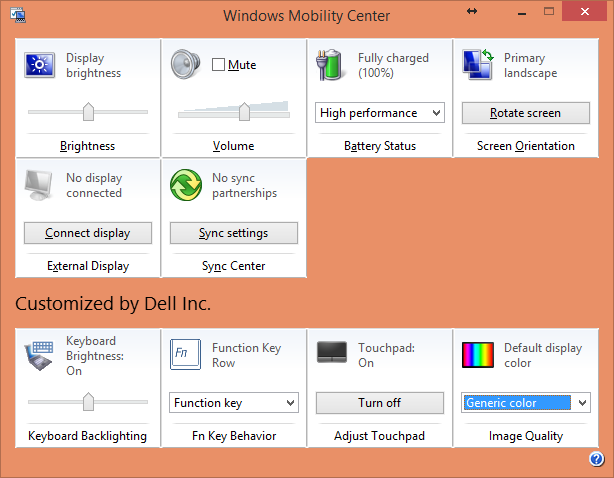
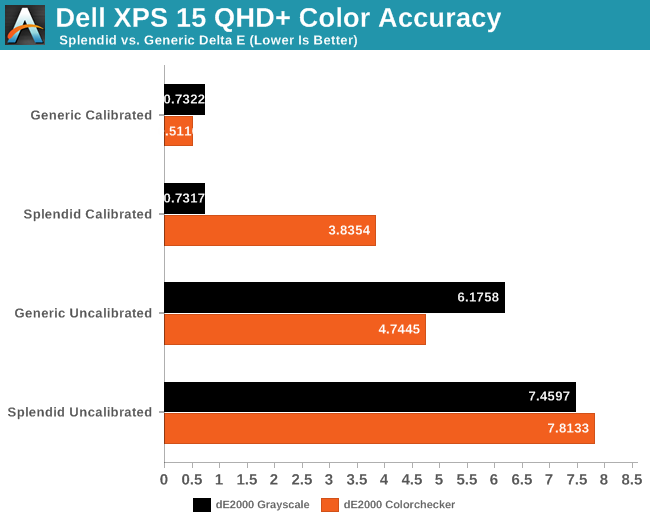
















Bookmarks